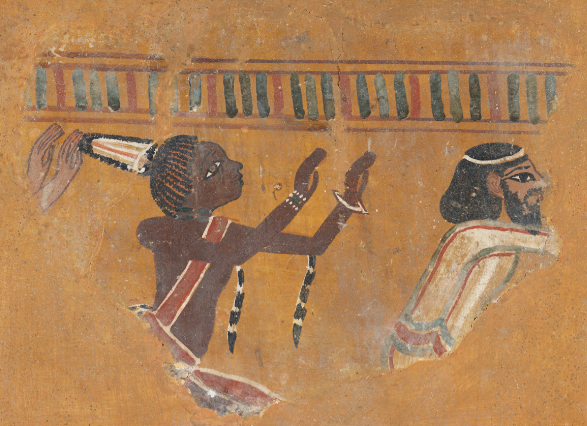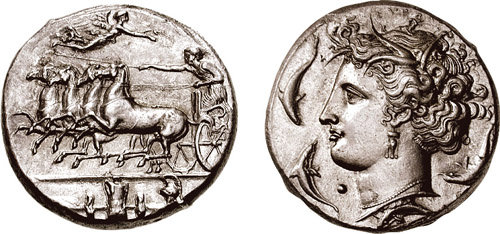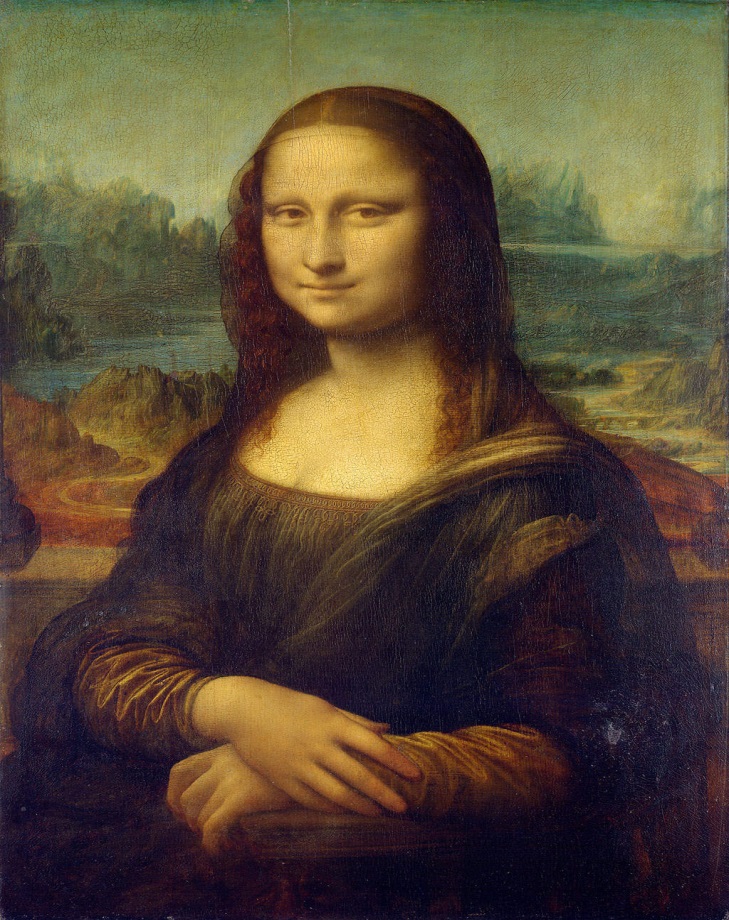Introduction
Museums serve as important points where treasures are kept for public viewing especially for ancient sculptures, decorative arts, paintings among other collections. Many museums in the modern world today have included industrial arts of the 19th century especially the collection on quality industrial designs. In the museum, there is that aesthetic value that the collections are displayed and that makes a viewer have an understanding and clarity of the arts of ancient times. The modern one reflects lifestyle, distinct civilized cultures, politics but on a global scale. This paper presents how experiencing art at the museum changes the understanding and appreciation of the arts of the ancient.
How Experience at the Museum Helps Understand and Appreciate Ancient Art
When an individual visits a museum, they get a unique taste and interest towards art. Most of the museums have broadened their missions and that has led to a fresh leaning of the central ideas about what it feels to have the ancient collections in mind. When visiting museums, for instance, a skeleton of a dinosaur or any other extinct animal can be seen and that gives a learning concept about how such animals looked like (Stokstad, 2008). It is possible to find such skeletons designed artificially and that gives the person behind the work credit on the work and broadens viewers’ image of the artwork in the earlier times. The historical hierographic and Egyptian pyramids challenge the modern society on how art was made to be fine without technology booster. When these collections are viewed keenly, they depict a sense of skilled personnel with quality design in their minds and hands.
The collections of ancient Mediterranean art are one of the widest ranges on the east coast which spans more than 5,000 years of human history. When someone visits the museum, they get information about the pre-dynastic Egypt in the 5th millennium BC. For example, the wall painting of a Nubian and Assyrian from Tomb as shown in figure 1 below, gives a unique experience of how ancient art was. In the work, a viewer can see how the colors are mixed and also the proportionality of the images that are centered to make an expression on the purpose of the art (Stokstad, 2008). Thus, such works illustrate a cross-cultural connection that was experienced in the Mediterranean in terms of religious, state, and domestic perspectives.

The materials that were used to make these ancient works make the visitor in a museum appreciate the unique discoveries that were made by the skilled people (Stokstad, 2008). For instance, there are granite carvings, prestigious hard stone carvings that are associated with the Greek as the modest clay materials then. Therefore, it shows a notable concern on how these people were committed to ensuring that they work on their arts for a long-term basis.
The museum of ancient art in Aarhus, Denmark is a place dedicated to showing the visitors the ancient cultural history of the society then especially for people of Roman and Greek descent. The museum has more than 4000 artifacts such as the Mummy of the temple singer Tabast, clay figurines, bronze objects, and many more (Falk & Dierking, 2016). Additionally, the Greek coin collection as shown in figure 2 is a notable extensive coverage especially for northern Europe with 2500 Roman coins. When a museum visitor comes across these coins, they appreciate the expertise and information power those people had then on business and general trade (Falk & Dierking, 2016). In that case, it is clear that the ancient society had a measure of value and that many individuals worked towards having a common system of exchanging goods and services.

As seen in the above figure, there is a depiction of a ruler since the far-left image shows someone guiding the horses with a pulled cart to a given direction. The picture is important to symbolize the ancient systems of administration that were characterized by animal-pulled vessels during major events. A visitor at the museum will understand that the ancient artisans had in their mind that ruling bodies should have been represented in the most valued forms of business transactions (Falk & Dierking, 2016). Additionally, the visitor will appreciate the artifacts as one way of expressing the ancient rule where people were subjected to authority then. From the coins, it is clear that the society in Greek then during the 6th century had started to revolutionize and so did the artisans.
Museums inspire and educate on various subjects through the artifact found in the place. Thus, it means when the collections are placed over a wide range of shelves, it can be well understood how art transitioned over time. The collections are a significant resource to many communities since they allow everyone to have an experience of things from all over the world in all periods. For instance, the Mona Lisa painting by Leonardo da Vinci that is found in many museums including the American Museum of science and energy is a well-illustrated artwork that shows how people had transformed socially then (Stokstad, 2008). When a visitor in the museum finds this exemplary piece by da Vinci, they start articulating about the beauty, love, and honor that human beings had before.
As seen in figure 3, Mona Lisa is a well-painted picture of a woman who nears a smile and is seen like having a curled beautiful air that is being blown by the air. People have understood that work is a combination of intelligence, skill, and talent in presenting an idea to the public. Today Mona Lisa helps society to know various aspects of social interaction and depiction of human beings, thanks to da Vinci’s work.

Changes Since Artwork was Started More than 30,000 Years Ago
Ancient works were more of originality in terms of what one had in their minds. The transformation of art has been catalyzed by the globalization effect that came due to the industrial revolution in Europe and other parts of the world. Currently, technology has significantly altered the way art is designed with modern artifacts being advanced and easily multiplied with a single command on a machine (Falk & Dierking, 2016). The knowledge of computer and the applications it uses has resulted to an improved and more aesthetic items of art. Although there are people who still use their hands to draw images and paint them, they must use graphics and web designers to boost the general appearance of the collections. Therefore, art has not been distorted in terms of quality but rather it has changed in terms of the sense of belonging on an individual for a given subject.
Human beings have significantly changed since the presence of art a long time ago. First, there are critical thinking and self-awareness motives that have been fostered in people. Art enables people to have the capacity to interpreted matters that seem to be hidden or that are somehow tough to handle. That is the reason why people have invented many technologies that can be used to refine art and process standard items (Falk & Dierking, 2016). The critical minds have led to the development of 3D printing designs that used the modern microservices architecture that uses a single function to deploy commands. Art has led to the understanding of how the forms of leadership were experienced before and therefore, giving people the liberty to have the exercise powers relating to what the ancient world used to do. Through art, systems of administration and also business policies are derived from the ancient community. Religion, social welfare, and lifestyle can be derived from the artifact’s presence within the society. Thus, art opens hearts ad feeds the mind on the basics of life.
Working with art boosts productivity because nowadays when designing office space, art is added to make it a worthwhile investment. The evident change is that personnel working in such offices will tend to be more productive than others. People who have enriched space decorated with art are said to work 15% faster than other personnel working in more spartan spaces (Falk & Dierking, 2016). The ancient art as seen in the museum gives people the interest in drawing, painting, and sculpturing as one way to have a treasure of artistic culture in the world.
Due to art, there have been museums that have brought communities together. The essence of unity is seen when there is a need to develop or come to concurrence on various matters. Museums have the power to unite social and political class as they provide the community with a collective heritage and cross-cultural contexts that people are proud to have. For instance, hove museum and art gallery in the UK housed Italianate Victorian at the seafront gives a history of the activities during the World War II (Falk & Dierking, 2016). When people get to understand the concepts, they have the vigor to associate themselves with the community then hence having a unifying factor in the interaction.
Conclusion
The presence of art has changed the academic paraphernalia in many parts of the world. Museums serve as places where current and future generations will draw their knowledge from when it comes to cultural interactions in the past. For instance, the Greek and Roman coins teach about the trade, rule, and culture that people had then hence been an educative subject. 80% of museums have programs to educate young people and more than $2 billion is annually spent on this matter (Falk & Dierking, 2016). The traditional skills are learned and that gives students the information power on ancient life. People grow to know the importance of art and they embrace it more because the education curriculum has offered art and design subjects that enlighten many people in society.
References
Falk, J. H., & Dierking, L. D. (2016). The museum experience. Routledge.
Stokstad, M. (2008). Art history (3rd ed.). Pearson Prentice Hall.